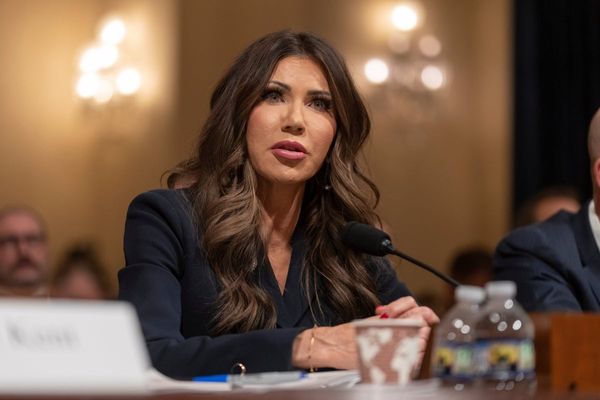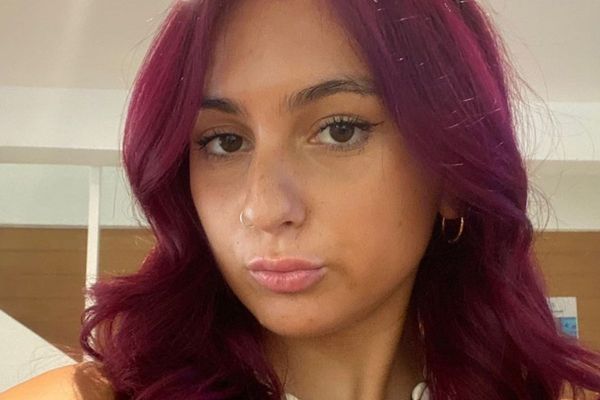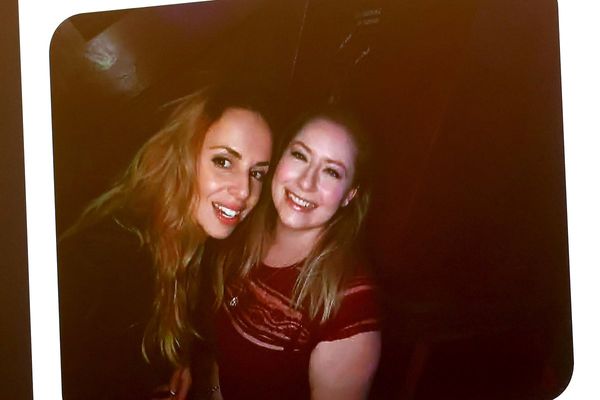LOS ANGELES — In the history of everything, there have been two Big Bangs.
One happened 13.8 billion-some years ago, and it created the universe.
The other one happened in mid-20th-century Southern California, and it created Fast Food America, a universe of its own, with a constellation of burger-and-burrito chains, all composed of the basic elements of salt, fat, sugar and pleasure.
It’s pretty obvious what birthed this second Big Bang in postwar California: a vertiginous economy, spreading suburbia, and cars — cars with fins and radios and young drivers, teenagers and nuclear families, all mobile, and all hungry for easy eats.
Southern California was a-boom with postwar prosperity. Wartime industry had slid easily into high-gear Cold War defense manufacturing. Aviation and automobile companies worked pedal to the metal.
George Geary, who wrote “Made in California! The California-Born Burger Joints, Diners, Fast Food & Restaurants That Changed America,” and who is at work on the second volume, said that “a lot of companies were working 24 hours,” and swift, round-the-clock food services like Denny’s expanded their stores, their menus and their hours to match.
It’d almost be easier to list the fast-food chains that did not begin in these palmy latitudes. For a manageable definition here, “fast food” means selling on-the-go, eat-with-the-hands sandwichey foods and some kind of sweet drinks or desserts — no table service, no tablecloths. That lets out a great many chains, like Baskin-Robbins (founded 1945 in Glendale), See’s Candy (founded in 1921 on Western Avenue in Los Angeles), Orange Julius (1926 in downtown L.A.), and Wil Wright’s powder-puff-pink ice cream parlors (long gone from locations in flossier L.A. neighborhoods).
So if yours isn’t here, don’t @ me.
Most began as mom-and-pop undertakings, or pop-and-son enterprises, and wound up as corporate-owned chains. The forthrightly named Hot Dog on a Stick was a mom-and-son effort: Dave Barham used his mother’s cornbread recipe to coat hot dogs and sell them along the Santa Monica sand in 1946.
One, In-N-Out, has stayed in the family since the first one opened, in Baldwin Park in 1948, and the loyalty of its customers and workers approaches the devotional. Sixty years ago, Elizabeth Taylor famously had chili from the WeHo movie-star hangout Chasen’s flown to her in Rome when she was shooting “Cleopatra.” More than 20 years ago, a U.S. Army sergeant from Baldwin Park was released after spending a month as a POW in Yugoslavia. His mother flew to see him, packing his favorite In-N-Out burgers.
Burger chains have followers who divide along the give-no-quarter battle lines of Coke vs. Pepsi. An ardent Bob’s Big Boy (founded 1936 in Glendale) guy would never be caught dead at Jack in the Box (founded 1951 in San Diego). A true Taco Bell (founded 1962 in Downey) fancier wouldn’t dream of sullying her taste buds with goods from Del Taco (founded 1964 in Yermo, in the Mojave Desert). You couldn’t pay a Carl’s Jr. (founded 1941 in Los Angeles) devotee to cross the threshold of a McDonald’s (founded 1940 in San Bernardino).
The original McDonald’s, which grew into the supernova in this constellation, was founded by two brothers who crafted a strategy of high-quality, high-volume, low-priced, speedy food for their burger stand in San Bernardino; the modern-day McDonald’s lamentably misspells the city’s name once in the history part of its website.
The founder of global McDonald’s, Ray Kroc, first became the brothers’ franchise agent and then bought them out, supersizing the brand into a world-beater burger-eaters’ fave. (There were some strained do-si-dos over the term “founder.” Dick, one of the two original McDonald brothers, complained a few years before he died that “Suddenly, after we sold, my golly, [Kroc] elevated himself to the founder.” The 2016 biopic about Kroc took “The Founder” as its title.)
Now, in the sometimes treacherous field of fast-food origin lore, ironclad proof can be hard to come by, so better to steer clear of some disputed “firsts,” like which chain came up with the first drive-up service for cars, the first squawk-box ordering gizmo, or the first carhops, or the first cheeseburger. “If you write that,” Geary told me, with the voice of experience, “they all get mad at you.”
In this one case, bring on the @s — because here I will bat for the local team. The Rite Spot stood on a rise on the old Route 66, on Colorado Boulevard and Avenue 64, at the divide between Pasadena and Eagle Rock. In 1916, it was an ideal place to feed and water drivers whose flivvers were overheating from the climb uphill from the west, and there the Sternberger family opened for business on the site of the Hinky Dink barbecue stand.
One iteration of the “first cheeseburger” stories is that a Rite Spot customer asked for cheese on his burger; another, that one of the Sternberger sons burned one side of the burger and covered it up with cheese. In any case, by 1928, the menu at O’Dell’s, on Figueroa Street in South L.A., was offering a cheeseburger with chili for two bits.
Other places claiming to have “invented” the cheeseburger six or eight or 10 years later can go soak their ground chuck.
All over Southern California, short-lived, small-chain drive-ins had a moment, or two. From its flagship in Hollywood, Scrivener’s half-dozen or so drive-ins were 1950s’ teenagers second home. Early rock ‘n’ roll DJ Art Laboe broadcast his “Drive-In Restaurant” show from there, and one day, he told me, he called on Elvis to come on down to Scrivener’s. “He wouldn’t go on the air, but he came over. He had Natalie Wood with him. I thought, wow, this is great! So I just said that Elvis was there, and it looked like a traffic jam in about 10 minutes.”
Like California itself, so long isolated from the East and Midwest, California fast food was the first fast food, sui generis, and woe betide most interloper chains trying to cross the Rockies and the desert to plant themselves here. Geary: “We’ve had companies back East try to come here, and they don’t work.”
To me, one astonishing fact about this SoCal flowering of fast food is that some of the people who began it knew and even helped out one another. Their stories are as overlapped and interconnected as Queen Victoria’s vast family, and more productive.
Glen Bell and Neal T. Baker were high school besties in San Bernardino, and teenagers when the McDonald brothers opened for business. (San Bernardino was a Silicon Valley of new fast-food chains.) Pretty soon Baker was helping the McDonalds to re-engineer their service. Then, a couple of miles to the east, Baker built the first Baker’s Drive-Thru, which to this day operates about three dozen places in the Inland Empire. Bell, soon to start up Taco Bell, opened his own hot dog stand nearby. He soon learned some service and taste tips from the Mitla Cafe, the Mexican restaurant across the road. He opened his own Taco Tia stands before inaugurating Taco Bell in Downey in 1962, with its corny, stylized Mission-bell facade — not the first nor the last time fast food would create an architectural sub-genre of fast-food style.
A soon-to-be-mustered-out Air Force mail clerk named Ed Hackbarth applied for a job at Baker’s place in Rialto. The position was filled, so Baker sent Hackbarth over to work at Bell’s taco stand near Barstow. In 1964, Hackbarth and a partner opened their own Mexican food place in Yermo: the first Del Taco, with a burger menu and a Mexican food menu. One story goes that its original name was Casa del Taco, but in the fashion of the fast food world — which clipped ”through” to “thru” and “doughnut” to “donut,” probably to save on signage costs — it got snipped to just Del Taco.
The begats just kept on begetting. One of Del Taco’s employees — or a partner, depending on the source — was Dick Naugle, who started his own fast-food chain, Naugle’s, in 1970, a chain that ended up merging with… Del Taco.
As Glen Bell was building his Taco Bell chain, his assistant, John Galardi, decided he wanted to get into the boss’ old hot dog game himself. As the Wienerschnitzel website tells it, Galardi was having dinner with Bell and his wife, and racking his brain for a name for his undertaking. Mrs. Bell went paging through a cookbook and found a Viennese cutlet recipe, a dish nothing like a hotdog, but with a cheeky, slightly comic name: Der Wienerschnitzel. Galardi opened his first outlet in Wilmington in 1961, on land that Bell reportedly leased to him.
Ten years earlier, right there in Wilmington, Albert Okura was born. He worked management jobs at Del Taco, and in the 1980s, struck by the quality and efficiency of El Pollo Loco, he started his own chain of Mexican-style broiled chicken, Juan Pollo, which still does business, mostly in the Inland Empire, the home turf of so many chains. Okura also bought the San Bernardino land where the original McDonald’s had once stood and raised up a McDonald’s museum of decades of McD ephemera. The fact that it exists at all is a bit of a wonder, considering that McDonald’s is about as muscular as Disney in protecting its name.
Cool coincidence: Kroc and Walt Disney, both from Illinois, served in the same World War I ambulance unit. Decades later, says the book “Fast Food Nation,” Kroc tried and failed to persuade Disney to put McDonald’ses in Disney’s new Anaheim theme park.
The cooperation among these competitive creators is still hard to get your head around. Advertising and “free media” are the battlefield of current-day corporate burger wars. In 2016, a New York Burger King franchise did itself up in its idea of a terrifying costume: it draped itself in sheets and labeled itself “McDonald’s.”
If it’s actual terror that interests you, have a look at Eric Schlosser’s influential 2001 book “Fast Food Nation.” It scrutinizes fast food step by step and bite by bite, all the corporatizing, globalizing and industrializing of these once family-scale neighborhood businesses. Most of all, as the saying goes, it lays out, bare as a burger on a bun, the high and hidden human price of cheap food.
The burger glut today looks like a saturated, saturated-fat landscape. Chains try to keep up with and keep ahead of customers’ tastes, so naturally, failure-to-launch dishes bestrew the fast-food paths: McDonald’s pizza and salad shakers, Taco Bell’s seafood salad, any number of light — or “lite” — taste sensations.
Vegetarian choices, some not bad, some completely undistinguished, appear and disappear from menus. Alas, if all that some people know about vegetarian offerings is a “meh” item on a fast-food bill of fare, they’ll have made up their minds: “Yuck. I don’t like vegetarian food.”
In-N-Out’s very brief menu immunized itself from food trends. Carl’s Jr. founder Carl Karcher once said, “Everyone in the fast-food industry envies In-N-Out. We’re working on new products every year, and In-N-Out keeps the same menu and knocks ‘em dead.”
The old chains can’t be all things to all palates, so new California chains found audiences for those tastes, among them Panda Express (founded in Pasadena by the Cherng family in 1983) and Wahoo’s Fish Tacos (founded in 1988 in Costa Mesa by the Lam brothers).
Fast-food Mexican food, like Taco Bell’s first menus, wasn’t authentically just-like-in-Mexico Mexican food, but cooked up a hybridized Yankee standardization of the million family-recipe versions of the original. George Geary: “You talk to people in Mexico and they say, ‘That’s gringo food.’ There’s no such thing as an ‘enchirito’ in Mexico.” For a time, some years past, the Taco Bell drive-up menu had a helpful phonetic pronunciation guide: “buh-ree-toh.”
The Times’ Gustavo Arellano used to be murder on Taco Bell. But he mellowed — not as mellow as some blander Taco Bell items, but mellower. “It’s just not good food,” he said 10 years ago. Yet he’ll give it this: “It is a type of Mexican food.” Taco Bell’s best-known spokesman was Gidget, a “talking” Chihuahua demanding, in a Señor Wences voice, “Yo quiero Taco Bell.”
By 2012, there was so much commercial burger charbroiling going up into the air that a UC Riverside study concluded that an 18-wheeler diesel engine truck would have to travel 143 freeway miles before it put out the same amount of particulate gunk as one charbroiled burger patty.
Last month, Consumer Reports said its research found dangerous PFAs, so-called “forever chemicals” that can make their way into foods, in the packaging at McDonald’s, Taco Bell, and a half-dozen other restaurant chains. Those two are said to be committed to phasing out PFAs in packaging by 2025.
Your burgers may be served by the billions, but unless you make it in pop culture, you’re just fast food. From the day in 1947 that a Texas-born Black woman named Lovie Yancey opened her three-stool Mr. Fatburger hamburger stand on Western Avenue near Jefferson Boulevard, she was playing music for her customers.
Music returned the favor. Mr. Fatburger became Fatburger, a marquee name in South L.A. and Beverly Hills, and in a score of countries. Ray Charles was one of Yancey’s customers, and rappers Ice Cube and Notorious B.I.G. worked the name of the hometown burger brand into their lyrics. In 2Pac’s “Late Night,” “The club be poppin’ so I’m stoppin’ at the Fat Burger.”
Yancey died in 2008, 18 years after she sold the company to an investment group, and 22 years after she set up a $1.7-million City of Hope endowment for sickle-cell anemia research, to honor a promise to a young grandson who died of the disease.
The Beach Boys didn’t use the name in their lyrics, but the hamburger stand the cute girl was driving her daddy’s T-bird through in the song “Fun, Fun, Fun” was Fosters Old-Fashion Freeze, founded in 1946 in Inglewood and spelled “Foster’s.” The correct apostrophe later and perplexingly vanished from the name. Maybe neon punctuation was too expensive.
The hamburger stand in “Fun, Fun, Fun” was the Hawthorne Fosters Freeze, less than a mile from the Wilson brothers’ boyhood home.
In the original Big Bang, there’s a core, an infinitesimal singularity that brought the whole universe bursting into creation. The singularity in the universe of fast food franchises began in a Central Valley town that’s now better known for its wine than for the foamy homemade brew that Roy Allen was pouring into cold mugs in June 1919, to settle the dust raised by a homecoming parade for World War I veterans.
Allen was the A in A&W. The W was for a later partner in the root beer franchises, Frank Wright. Six months before the Lodi parade, the 18th Amendment, Prohibition, passed its last constitutional hurdle, and six months after Allen poured his first brew in Lodi, and for 13 years thereafter, the only beer that Americans could legally find for sale was root beer.







